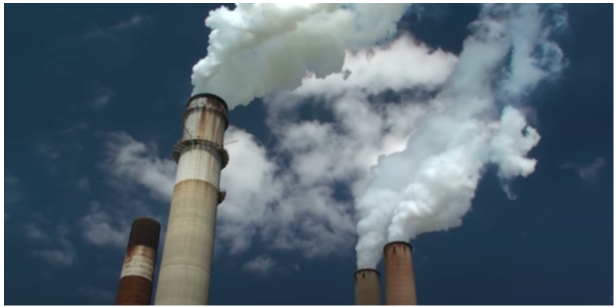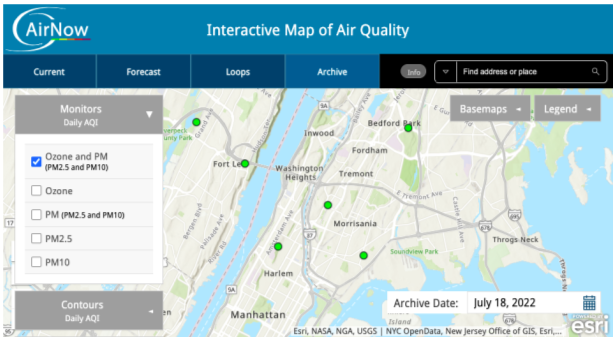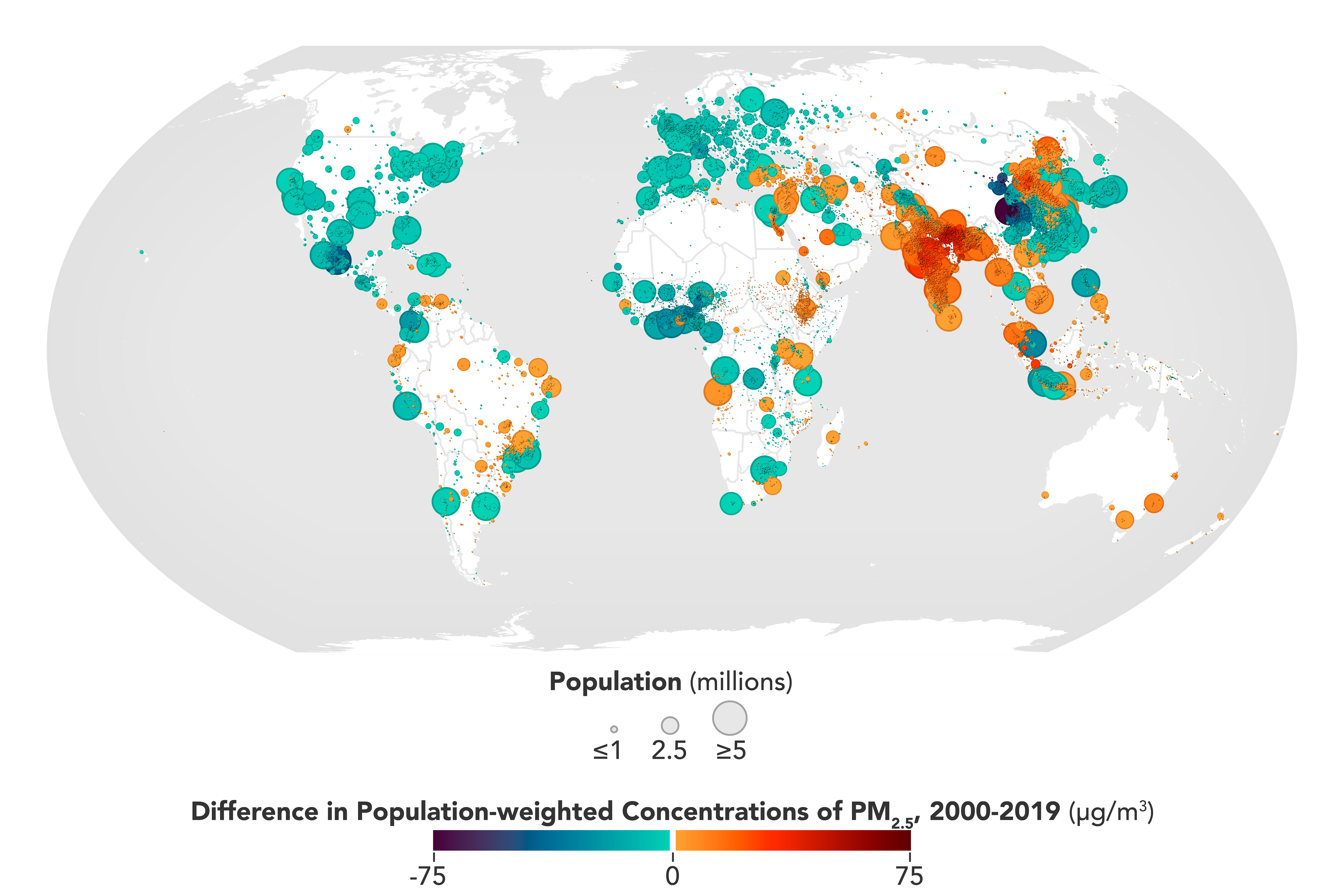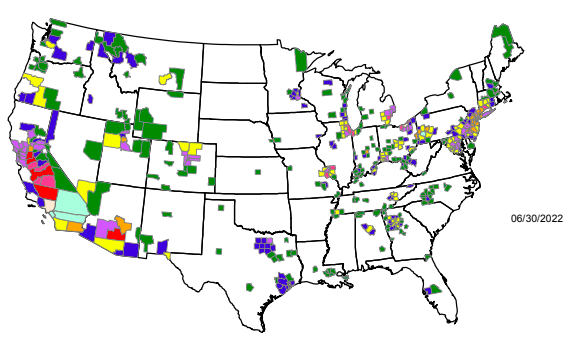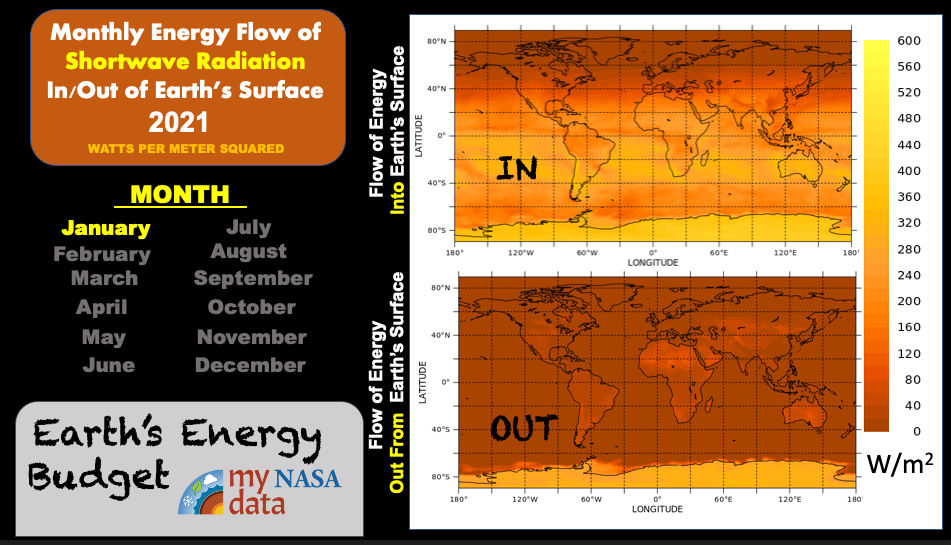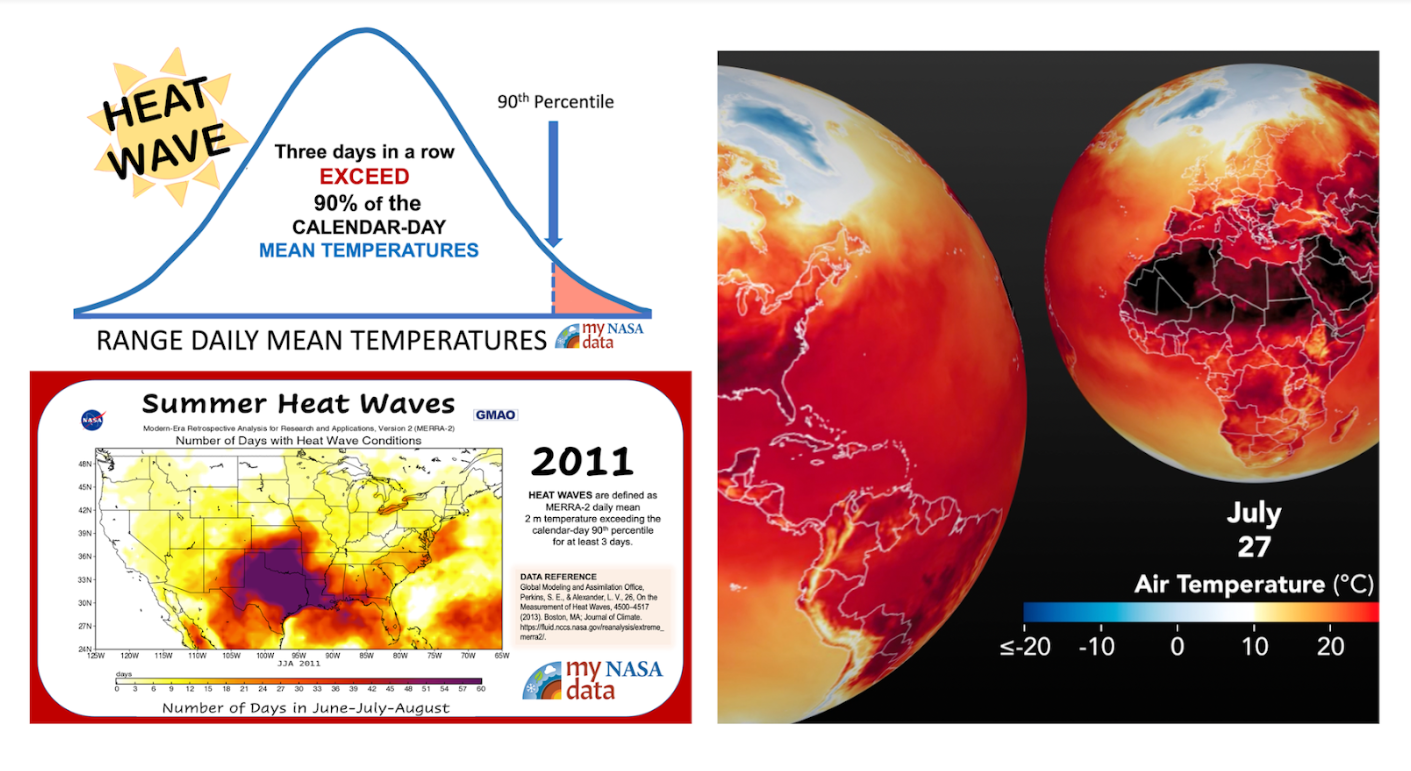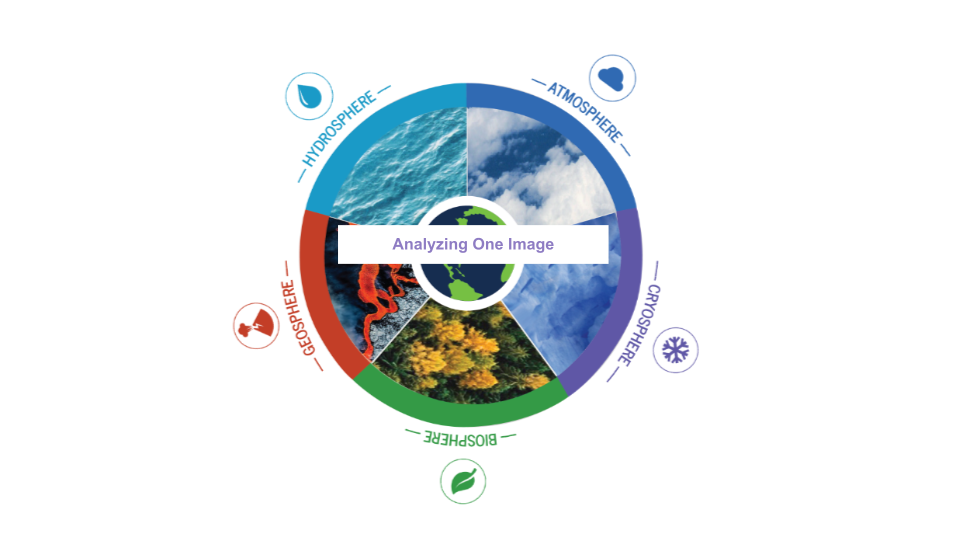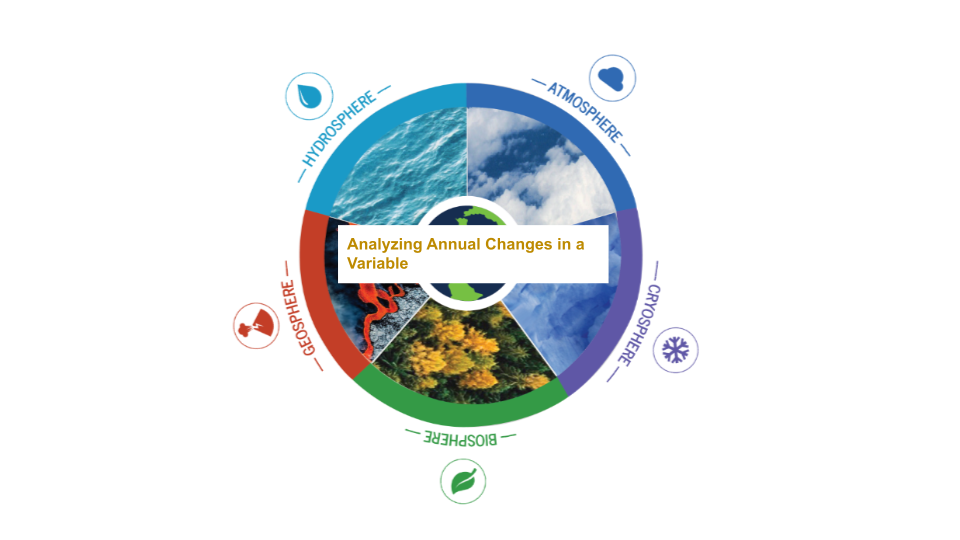In this 5Es lesson, students will uncover how changes in global air quality have impacted human health in cities between 2000 and 2019.
List of all Atmosphere Lesson Plans




Students synthesize information from My NASA Data maps and texts from the EPA website to determine how levels of criteria pollutants have changed from 2005 to 2021. This research will prepare them to respond to the lesson’s essential questions during a Socratic seminar.
Students interpret AQI maps and charts to compare today’s AQI with the past five days. Using the EPA’s air quality activity guides, students create a social media post for residents of their region providing key information related to today’s AQI.
Students will engage in a “Zoom In Inquiry” learning routine to understand the symbols on a world map that shows population-weighted concentrations of PM2.5. They will reflect on how their perception of the image changed as they saw more of the image.
Students will engage in a “Zoom In Inquiry” learning routine to understand a world map that shows changes in PM2.5-attributable mortality per 100,000 population (Bondie, 2013).
Students construct explanations about Earth’s energy budget by connecting a model with observations from side-by-side animations of the monthly mapped data showing incoming and outgoing shortwave radiation from Earth’s surface.
The extreme temperatures during July 2022 prompt students to investigate a model that displays historical heat wave frequency data to discover the importance of defining terms when interpreting data.
The Earth System Satellite Images, help the learner visualize how different Earth system variables change over time, establish cause and effect relationships for a specific variable, identify patterns, and determine relationships among variables over one year.
The Earth System Satellite Images, along with the Data Literacy Cubes, helps the learner identify patterns in a specific image.
The Earth System Satellite Images, along with the Data Literacy Cubes, help the learner visualize how different Earth system variables change over time, establish cause and effect relationships, identify patterns, and determine relationships among variables.









